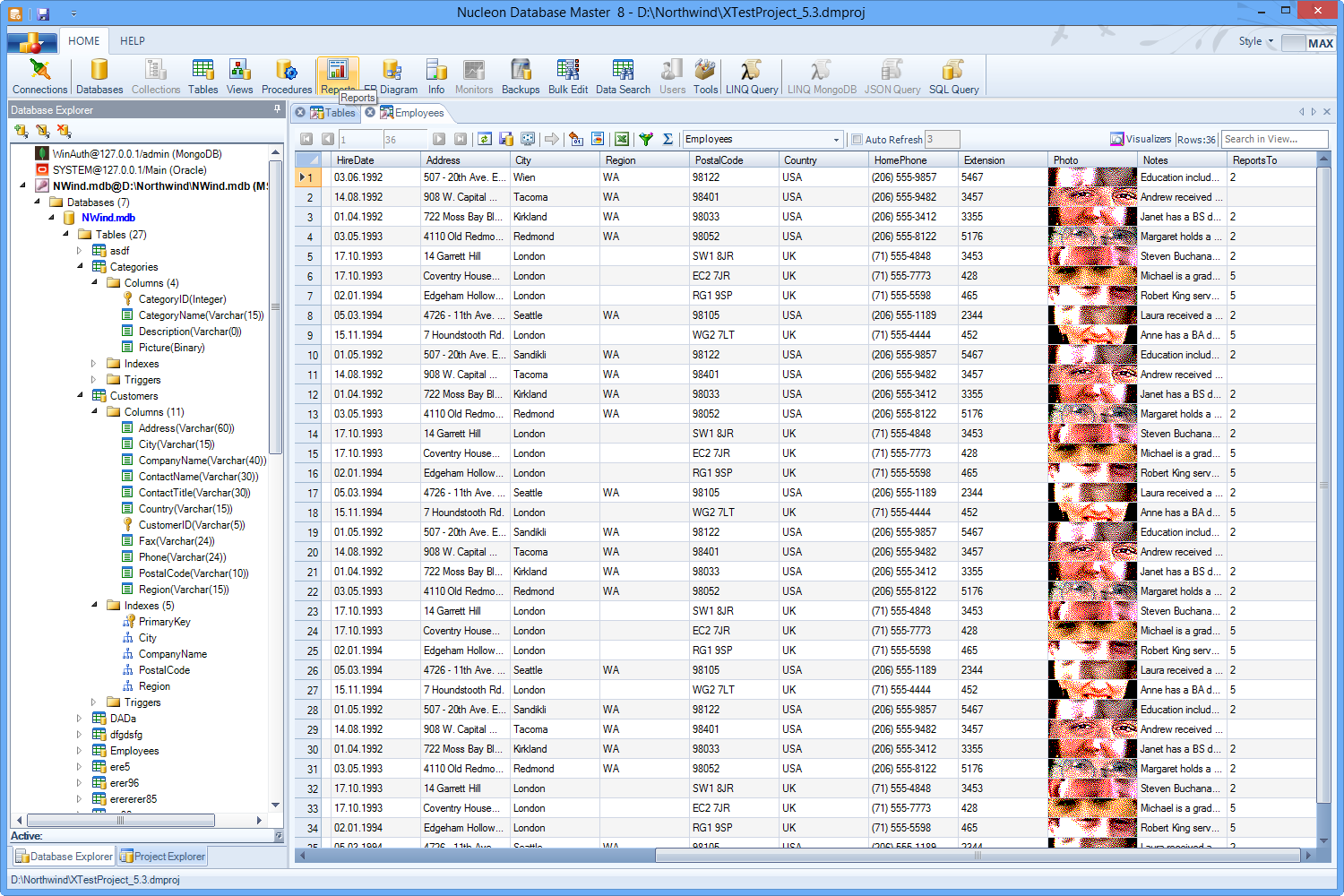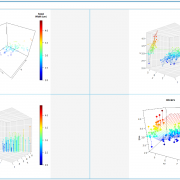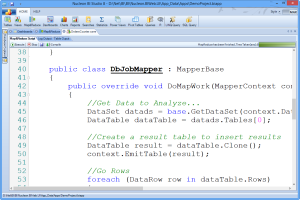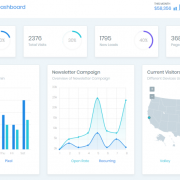Say hello to Couchbase, ArangoDB, CosmosDB and Redshift!
Nucleon BI Studio 10.5, BI Web 4.1 and Database Master 10.5 Released
We’re happy to announce the release of Database Master 10.5, Nucleon BI Studio 10.5 and BI Web 4.1. This new release brings you support for the the ArangoDB, Couchbase, Azure CosmosDB, Amazon Redshift database systems, important changes and improvements for all products.
So say hello to Couchbase, ArangoDB, Azure CosmosDB and Amazon Redshift!
Database Master Changes
We also removed the analytics modules (Statistics, OLAP, PowerView) from Database Master. It will be a smart data and database management tool for SQL and NoSQL systems in the future and no analytics.
Couchbase Support and just Relax
Nucleon products are supporting Couchbase database system which is an NOSQL system with N1QL query language. You can list Couchbase Buckets, view the Bucket data and query it using N1QL language. It allows you to add new documents and able export the documents to more then 10 file formats.
ArangoDB Support and get Avacado
ArangoDB is an powerful document oritented NoSQL database system with graph support. You can view ArangoDB collections and documents as data tree or table, query it using AQL query language. It allows you to add new documents and export to documents more then 10 file formats.
Azure CosmosDB Support
Microsoft Azure CosmosDB support allows you to use NoSQL database system on the cloud. You can connect to CosmosDB and query the MongoDB (backend of CosmosDB) collections using SQL language. It allows you to add new documents and export to more the 10 file formats.
Main Changes:
- Add Couchbase Support
- Add ArangoDB Support
- Add Azure CosmosDB Support
- Add Amazon Redshift Support
- Fixed OData v4.0 Schema Problem
- Fixed MongoDB Map&Reduce Editor
- Fixed MongoDB GridFS View
- Fixed Stored Procedures and Functions listing
- Fixed Execute Editor Problems for Procedures and Functions
- Database Master: Removed Analytics Module
- BI Studio: Improvements for Charting Module
- BI Studio: Improvements for Web Visualizer
- BI Studio: Fixed embeding Google Maps
- BI Web: Better R-Script result visualization
BI Studio 10.4 and Database Master 10.4 Released
Nucleon BI Studio 10.4 and Database Master 10.4 Released
We’re happy to announce the release of Database Master 10.4, Nucleon BI Studio 10.4 and BI Web 4.0. The new release comes with powerful features and important improvements for all products.
New Innovation
Nucleon BI allows to add R, C#, F# and Java script files as a data source. This feature opens a new door to programming and scripting languages like C#, Python, F#, Java etc. Nucleon BI render the script before executing it and get the results after script run. The results can be used in different visualizations , reporting, charting, dashboards, views and more.
New : C# Scripts as Data Source
Nucleon BI supports now C# scripts as data source. You can use the c# script for the visualization modules (Reports, Charts, Web) for data source.
New: R Script Results as Data Source
Nucleon BI supports now R scripts as data source. It stores the R scipt plot and table results in a data set for further visualization.
Improvements:
- New Viewer for Power Views
- New Viewer for Cross Tables
- New Dashboard Components (R, CrossTable and Url Link)
- More Descriptive Statistics
- Better Dashboard View
- Better Data Binding for R Script
- Fixed: Initializing Charting Titles
- Fixed: Initializing Charting Legens
- Update to Google.Apis 1.36.1.0
- Update to MySQL Driver 8.0.13.0
- Update to MongoDB Driver 2.7.2.0
- Update to Oracle Driver 4.122.18.3
- Update to NuoDB Driver 2.3.0.11
- Update to Amazon Web Services SDK Driver 3.3.0.0
- Update to Google.Apis.Analytics.v3 1.36.1.1268
Nucleon Atomic 4 Released
Nucleon Atomic 4 has been released
Nucleon Atomic 4 releases includes some bug fixed and performance improvements. Nucleon Atomic has two Setup Files:
- Nucleon Atomic Master: Organize map&reduce tasks, data source connection and data query
- Nucleon Atomic Worker: Computes the given code tasks.
Nucleon Atomic is a distributed computing Framework which supports the map&reduce programming model for data computing and data processing using WCF streaming. It is build on the top of .Net Framework with WCF and pure C# Language.
For more information:
http://nucleonsoftware.com/products/nucleon-atomic
Nucleon BI Studio 10.1 and BI Web 4.0 Released
Nucleon BI Studio 10.1 and BI Web 4.0 Released
We are proud to announce that Nucleon BI products are released with new features. Nucleon BI Studio 10.1 releaed with Web Module and Nucleon BI Web 4.0 released also with the support of Web Elements and JavaScript Libraries. You can design a Web page inside BI Studio and bind data to it.
New : Web Module
Web module allows to visualize Web elements (Html Table, List, JavaScript etc.) using data binding.
Data Binding with Web Elements
The data binding technology allows to bind the data to the Web elements (Html, List, Image) and any JavaScript libraries. It gives you to full power of Web development and Web data visualization to you.
New: Web Dashboard
Web Dashboards are Html and JavaSCript based Web pages with data binding.
Planned Features
WE are developing new Modules and Features for Data editing, Apache Spark integration, Jobs and Tasks Scheduling and Business Workflows.
Visual Representation of SQL Joins
Introduction
This is just a simple article visually explaining SQL JOINs.
Background
I’m a pretty visual person. Things seem to make more sense as a picture. I looked all over the Internet for a good graphical representation of SQL JOINs, but I couldn’t find any to my liking. Some had good diagrams but lacked completeness (they didn’t have all the possible JOINs), and some were just plain terrible. So, I decided to create my own and write an article about it.
Read More: https://www.codeproject.com/Articles/485777/SQL-Joins
Beginners' guide to using MongoDB 4.0.2 and C#
Beginners’ guide to using MongoDB 4.0.2 and C#
Introduction
This article attempts to highlight the latest developments in both the Mongo open-source document database and the open-source official C# driver. This piece has now been updated to reflect version 4.0.2 of the database and version 2.7 of the C# driver.
Overview of Document Databases.
Document databases store information relating to a record in a contiguous blob of data known as a document . A document’s structure usually follows the JSON format and consists of a series of key-value pairs. Unlike the schema of relational databases, the document’s structure does not reference empty fields. This flexible arrangement allows fields to be added and removed with ease. What’s more, there is no need to rummage about in various tables when trying to assemble the data; it’s all there in one solid block. The downside of all this is that Document databases tend to be bulky. But, now that disk drives are in the bargain basement, the trade off between speed of access and storage costs has shifted in favour of speed and that has given rise to the increased use of document databases. The Large Hadron Collider at Cern uses a document database but that’s not why it keeps breaking down.
Read More: https://www.codeproject.com/Articles/524602/Beginners-guide-to-using-MongoDB-4-0-2-and-the-off




